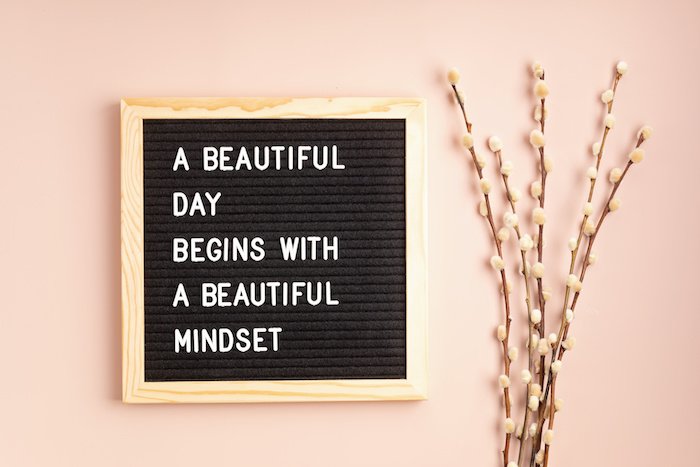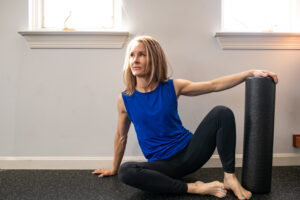You can read an article, listen to a friend’s experience, or see an amazing ad on social media. There is a plethora of incentives that help us finally make the decision to make our health and wellness a priority. Members often share that they’d “had it” and “have tried everything, and none of my old tricks work anymore.” Today’s thought isn’t about what took you from “not now, I’m too busy” to “I’m ready.” Today’s message is how to make a lasting COMMITMENT.
Improving our wellness begins with a decision that this is worth our a) time, b) effort, c) energy, and d) resources. All four of these are limited in quantity, yet for those who make this commitment, they find ways to stick to the program. For life.
We know from your life’s experience that you can achieve whatever you “put your mind to.” Maybe you made the decision to build a career in your industry, you’ve taken on a volunteer position at a charity, or you chose to care for a family member(s). These are all examples of decisions we make, and so often, we CRUSH them. We CRUSH them because we fully committed our heart, soul, and everything we have to the commitment.
More examples are committing to running a 10K, making this holiday season more peaceful in your home, and making new friendships in a new neighborhood. I could go on, yet I bet you get my point. We make the decision. The decision then turns into a lasting commitment.
The commitment to our wellness has three components. We cannot cheat any of them.
- Awareness. This is when we realize we want to feel better and recognize we need to make lifestyle changes that we know for a fact will result in feeling and looking better.
- Mindset. This is the ability to shift our mindset from old ways of thinking that are likely counter to what we’ve believed – and practiced – in the past. They are likely habits we may not have tried. This is KEY. When we BELIEVE we CAN feel better, this is, I believe, where the magic happens.
- Accountability. This is creating habits and consistently sticking to them, regardless of busy schedules, vacations, someone else’s needs, etc. This is also possibly sharing your renewed wellness plan with another who can hold you accountable.
This is the story of Jill, who initially had a hard time a) believing that holistic wellness really mattered to looking better and b) making the changes we discussed.
Jill had the awareness that her health and wellness needed improvement. It was right in front of her. She didn’t feel great about how she looked and was on edge most days. Little things set her off.

Her mindset needed to catch up to what she believed she wanted. Jill wanted so badly to believe that practicing small habits over time creates an array of results, like weight loss and maintenance, stress relief, and a more peaceful daily existence. Today she will tell you how hard it is to NOT focus solely on diet and exercise. She admits she was stuck on the “fitness + diet = weight loss” story we have all become so accustomed to believing. She was so resistant that it took her several months before she began to try out some of my simple tricks for reducing her stress.
When I first began working with Jill, she had the habit of allowing stress to dictate her mood. After a while, she admitted her stress was high. Yet she didn’t understand how it impacted her wellness, particularly her body composition and confidence.
She asked, “You want me to take five deep breaths in the morning when my mornings are already so busy?” Furthermore, she said, “How can my stress have anything to do with my weight?” In her mind, there was just no way conscious breathing could help her body.
Eventually, Jill made a committed decision to make the changes.
Over time, Jill learned to incorporate more stress resilience habits like daily walks, gratitude and remembering others have their story. My favorite AW secret weapon for clients who struggle with high levels of anxiety: QTIP – Quit Taking It Personally…
When things got stressful, she used new tools – where she reacted less and responded more thoughtfully. She re-engineered how she approached stress. At first, it was hard for Jill to believe that her stress tolerance habits would have an impact on her body, but she decided to “trust the process.”

With her determination, consistency, and accountability, Jill was able to develop daily habits which greatly reduced her stress and improved her well-being.
She couldn’t believe how good she felt after making the small changes. After six months, she declared, “I know now that the guilt I always felt about poor food choices was even worse for my wellness than the actual food. This is a huge relief for me. I now feel very little guilt or shame over food, and my stress is lower.”
All of this is to say, making the decision to change how she responded to stress came only after the three components of awareness, mindset, and accountability were incorporated into her plan.
Jill is still on her journey, as I am, too, to achieving holistic wellness. She continues to build on the habits she has developed, and even on the tough days, she finds a way to make her wellness a top priority.
Are you 45 years or older? Do you want to join Jill and others to learn how to navigate your health, perimenopause, and menopause? If so, download my Menopause Blueprint HERE.



